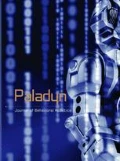Abstract
Tracking and segmentation find a wide range of applications such as intelligent sensing of robots, human-computer interaction, and video surveillance. Tracking and segmentation, however, are challenging for many reasons, e.g., complicated object shapes, cluttered background. We propose a tracking and segmentation algorithm that employs shape priors in a consecutive way. We found that shape information obtained using the Min-Cut algorithm can be applied in segmenting the consecutive frames. In our algorithm, the tracking and segmentation are carried out consecutively. We use an adaptive tracker that employs color and shape features. The target is modeled based on discriminative features selected using foreground/background contrast analysis. Tracking provides overall motion of the target for the segmentation module. Based on the overall motion, we segment object out using the effective min-cut algorithm. Markov Random Fields, which are the foundation of the min-cut algorithm, provide poor priors for specific shapes. It is necessary to embed shape priors into the min-cut algorithm to achieve reasonable segmentation results. Object shapes obtained by segmentation are employed as shape priors to improve segmentation in next frame. We have verified the proposed approach and got positive results on challenging video sequences.
Similar content being viewed by others
References
A. Boregefors. “Distance transformations in digital images”, Computer Vision, Graphics and Image Processing, Vol. 34(3), pp. 344–371, 1986.
Y. Boykov and M-P. Jolly. “Interactive graph cuts for optimal boundary and region segmentation of objects in n-d images,” in Proc. of Int’l Conf. on Computer Vision, pp. 105–112, 2001.
G.R. Bradski, “Computer Vision Face Tracking as a Component of a Perceptural User Interface,” in Proc. of the IEEE Workshop Applications of Computer Vision, pp. 214–219, 1998.
R. T. Collins, “Mean-shift Blob Tracking through Scale Space,” in Proc. of the IEEE Conf. on Computer Vision and Pattern Recognition, pp. 234–240, 2003.
R. T. Collins and Y. Liu, “On-line Selection of Discriminative Tracking Features,” in IEEE Trans. on Pattern Analysis and Machine Intelligence, Vol. 27, No. 10, October 2005.
D. Comaniciu, V. Ramesh, and P. Meer, “Kernel-based Object Tracking,” IEEE Trans. Pattern Analysis Machine Intelligence, vol. 25, no. 5, pp. 564–577, 2003.
D. Freedman and T. Zhang. “Interactive graph cut based segmentation with shape priors,” in Proc. of IEEE Conf. on Computer Vision and Patten recognition, pp. 755–762, 2004.
S. Geman and D. Geman. “Stochastic relaxation, Gibbs distributions, and the Bayesian restoration of images.” IEEE Transactions on Pattern Analysis and Machine Intelligence, 6:721C741, 1984.
D. Greig, B. Porteous, and A. Seheult. “Exact maximum a posteriori estimation for binary images”. Journal of the Royal Statistical Society, Series B, 51(2):271C279, 1989.
V. Kolmogorov and R. Zabih, “Multi-camera Scene Reconstruction via Graph Cuts”, in Proc. the 7th European Conference on Computer Vision (ECCV 02), May, 2002.
D. G. Lowe. Distinctive image features from scale-invariant key-points. International Journal of Computer Vision, vol. 60, no. 2, pp. 91–110, 2004.
C. Rother, V. Kolmogorov, and A. Blake, GrabCut -Interactive Foreground Extraction using Iterated Graph Cuts, ACM Transactions on Graphics (SIGGRAPH), August 2004.
A. Rowe, C. Rosenberg, and I. Nourbakhsh, “A second generation low cost embedded color vision system,” in Workshop in Proc. of the IEEE Conf. on Computer Vision and Pattern Recognition (CVPRW’05), pp. 136, 2005.
C. Stauffer and E. Grimson, “Learning pattern of activity using real-time tracking,” IEEE Trans. on Pattern Analysis and Machine Intelligence, vol. 22, no. 8, pp. 747–757, 2000.
H. Tao, H. S. Sayhney, and R. Kumar, “Dynamic Layer Representation with Applications to Tracking,” in Proc. of the IEEE Conf. on Computer Vision and Patter Recognition, vol. 2, pp. 134–141, 2000.
J. Wang and Y. Yagi. “Integrating shape and color features for adaptive real-time object tracking”, 2006 IEEE Int’l Conf. on Robotics and Biomimetics, 2006.
J. Wang and Y. Yagi. “Consecutive tracking and segmentation using graph-cut”, 2007 IEEE Int’l Conf. on Robotics and Biomimetics, 2007.
[18] J.Wang and Y. Yagi. Integrating Color and Shape-texture Features for Adaptive Real-time Tracking, IEEE Trans. on Image Processing, 17(2): 235–240, (2008).
[19] J.Wang, Y. Makihara, and Y. Yagi. “People Tracking and Segmentation Using Spatiotemporal Shape Constraints”, In Proc. of 1st ACM International Workshop on Vision Networks for Behaviour Analysis, Vancouver, Canada, Oct. 31, 2008.
Z. Zivkovic and B. J. A. Krose, “An EM-Like Algorithm for Color-Histogram-Based Object Tracking,” in Proc. of the IEEE Conf. on Computer Vision and Patter Recognition, pp. 798–803, 2005.
Author information
Authors and Affiliations
Corresponding author
Additional information
A preliminary version of this paper appeared in Proc. of IEEE Int’l. Conf. on Robotics and Biomimetics 2007, Dec. 15–18, 2007, Sanya, China.
About this article
Cite this article
Wang, J., Yagi, Y. Tracking and segmentation using min-cut with consecutive shape priors. Paladyn 1, 73–79 (2010). https://doi.org/10.2478/s13230-010-0008-y
Received:
Accepted:
Published:
Issue Date:
DOI: https://doi.org/10.2478/s13230-010-0008-y




